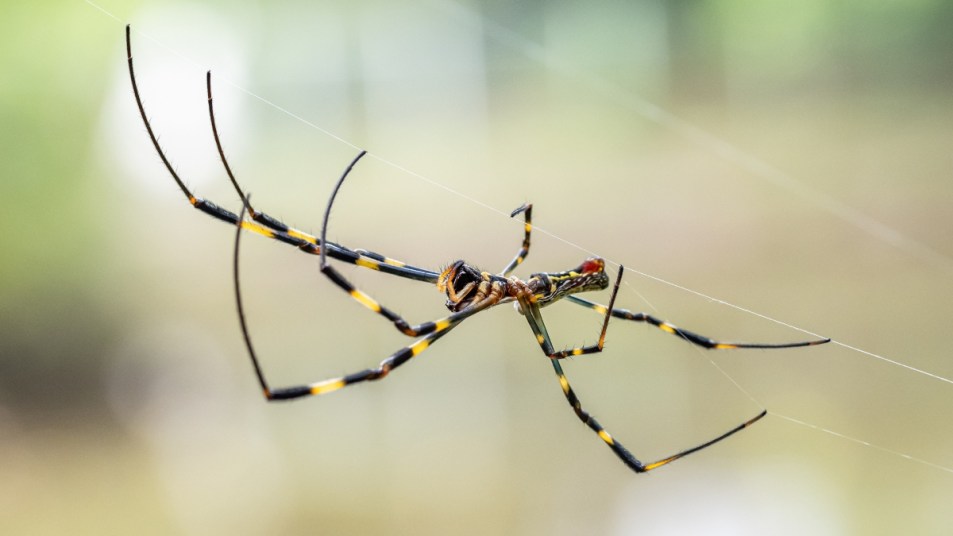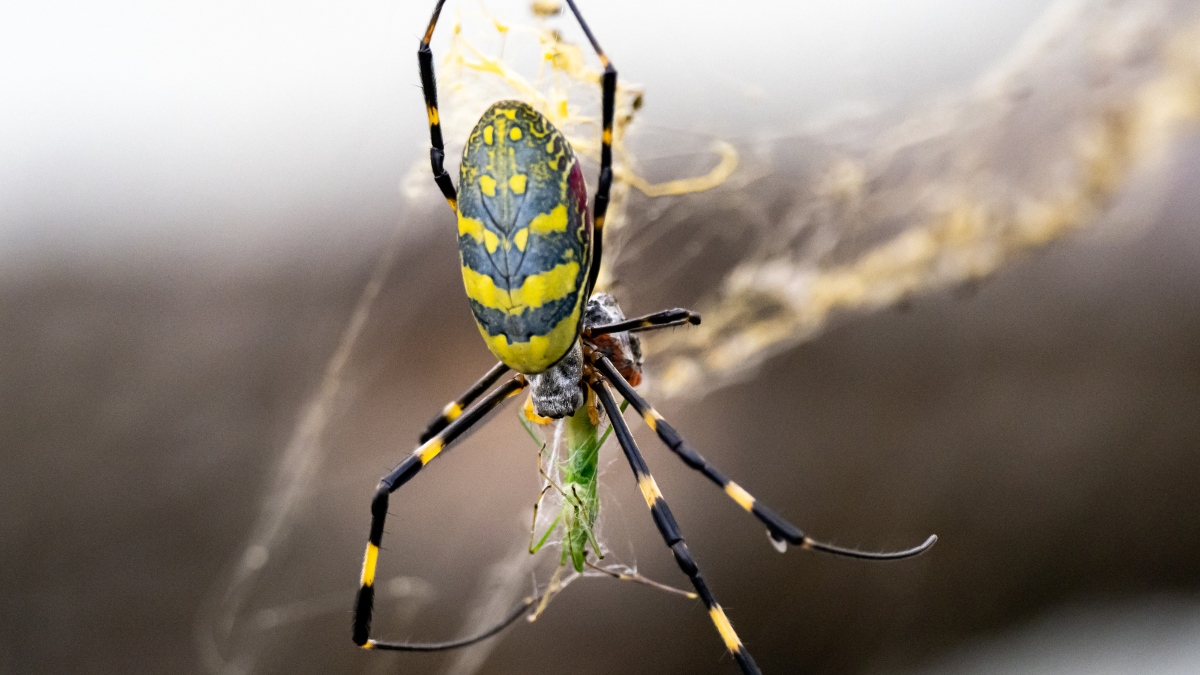Will ‘Parachuting Spiders’ Take Over the East Coast? No, But They May Help Your Garden

The other day, I came across an article about giant parachuting spiders, an invasive species that will soon overwhelm the East Coast. The headline certainly sent prickles down my spine — remember the terror surrounding “murder hornets?” No one wants a repeat of what felt like the modern-day plague. However, a deeper dive into the topic revealed that these fearsome-looking spiders are actually not much to worry about.

What are giant parachuting spiders?
While the media refers to them as parachuting spiders, they are actually known as Joro spiders. Adult females can grow up to one inch in body length and four inches in leg span. They also have a striped yellow and gray-blue abdomen as well as striped black and yellow legs. Juveniles tend to have slightly different markings on their abdomen, though their legs appear to be the same.
So, why are they called “parachuting spiders?” When these tiny spiderlings emerge from papery silk egg sacs, they’re so light that they can release silk and get lifted up into the air. This phenomenon is known as ballooning, and it helps carry spiderlings hundreds of miles.
As a result, it’s highly unlikely that we’ll see adult or even teenage Joro spiders parachuting down from the sky, and we probably won’t even notice the babies.
Where did the Joro spider come from?
Native to Japan, Korea, China, and Taiwan, the Joro spider likely appeared in the US in 2013. The man named Wesley Huffmaster who spotted one in Georgia at the time noticed that it was similar to a banana spider (which is in fact native to the southeastern US), but still quite unusual.
At the time, University of Georgia entomologist E. Richard Hoebeke said that he wasn’t too concerned about the species’ US arrival. “There’s no indication that it will be invasive to the extent that it would be disruptive or economically costly,” he told Sci Guru.
Now, new research suggests that Joros could spread to colder climates, up from Georgia all the way to Maine. We can’t really stop them (like we tried to do with the invasive spotted lanternfly), but we have reason to believe that they might help more than they harm.
Why Parachuting Spiders Might Not Be So Bad
We get it; Joro spiders look scary! I’ve always had a fear of creepy crawlies, and I would absolutely scream and run at the sight of one of these. However, we don’t have to worry too much about them. Penn State University notes that they are harmless to people and reluctant to bite. And if they do bite (likely because they were scared or provoked), their fangs are small and their venom is weak. People who have experienced a bite report that while painful, it’s not as bad as a bee sting.
Plus, the redness and localized pain should subside without medical intervention. But, if you do ever get bitten by a spider, it’s a good idea to get it checked out. While rare, you may be allergic to the venom. It can also be difficult to identify the species in the moment, so seeing a medical professional may help you determine what kind of care you need.
In addition, UGA Today explains that the Joro spider isn’t likely to harm nature’s current food chains or ecosystems. These crawlers may even become an extra food source for birds and other native predators. Plus, they can create beautiful webs up to 10 feet wide to catch and feed on pesky insects, including mosquitos adult brown marmorated stink bugs. Other native spiders in the US don’t feed on stink bugs, so this news is especially welcome to me!
If you see one of these critters in your garden this spring, don’t panic! Let it build its home and try your best not to bother it. Who knows? At a safe distance, that black and yellow spider may become your outdoor friend.













